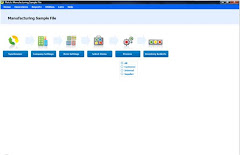- Two-thirds of new employer firms survive at least two years,
- 44 percent survive at least four years, and
- 31 percent survive at least seven years.
What is striking is that these findings do not differ greatly across industry sectors. In his book Small Business Management, Michael Ames gives the following reasons for small business failure :
- Lack of experience
- Insufficient capital (money)
- Poor location
- Poor inventory management
- Over-investment in fixed assets
- Poor credit arrangements
- Personal use of business funds
- Unexpected growth
For example, QuickBooks, one of the most popular software packages for small businesses to manage finances and inventory, can help determine how much inventory a business has on hand and when it's time to reorder, but it does not provide the intelligence to help businesses decide how much to keep around so they neither run out nor keep so much that it's not cost effective. In other words, the inventory capability provided, while providing a great start in establishing accurate records..., the existing tool relies on manual settings of inventory levels. When combined with lack of experience, this often results in poor inventory management.
Kathy Yakal of PCMAG highlights how small businesses use a new QuickBooks adjunct to not only manage their inventory but optimize their inventory at peak financial performance. Kathy Yakal notes that of the many QuickBooks add-ons that help with administrative inventory tasks, Phitch OC 9.0 is the only one that actually helps optimize inventory at maximum economic profit. Economic profit, which is a measurement of the economic value of an investment, can better weigh the complex tradeoffs involved with purchasing inventory.
So what does this mean for the small businesses? "By maintaining optimum inventory levels and order quantities, Phitch OC 9.0 may readily reveal a 15% improvement in economic profit over the conventional methods, providing businesses with hundreds of thousands if not millions of dollars in real and measurable benefits by simply changing the rhythm of when and how much inventory they order," says John Krech, President and founder of ePhiphony Incorporated.
In other words, not only does Phitch OC 9.0 provide the wisdom to not only manage inventory but to optimize it at peak financial performance, but it provides a much needed stimulus by revealing wealth that is needlessly tied up inventory that can be better utilized to help a small business survive those first critical years.

